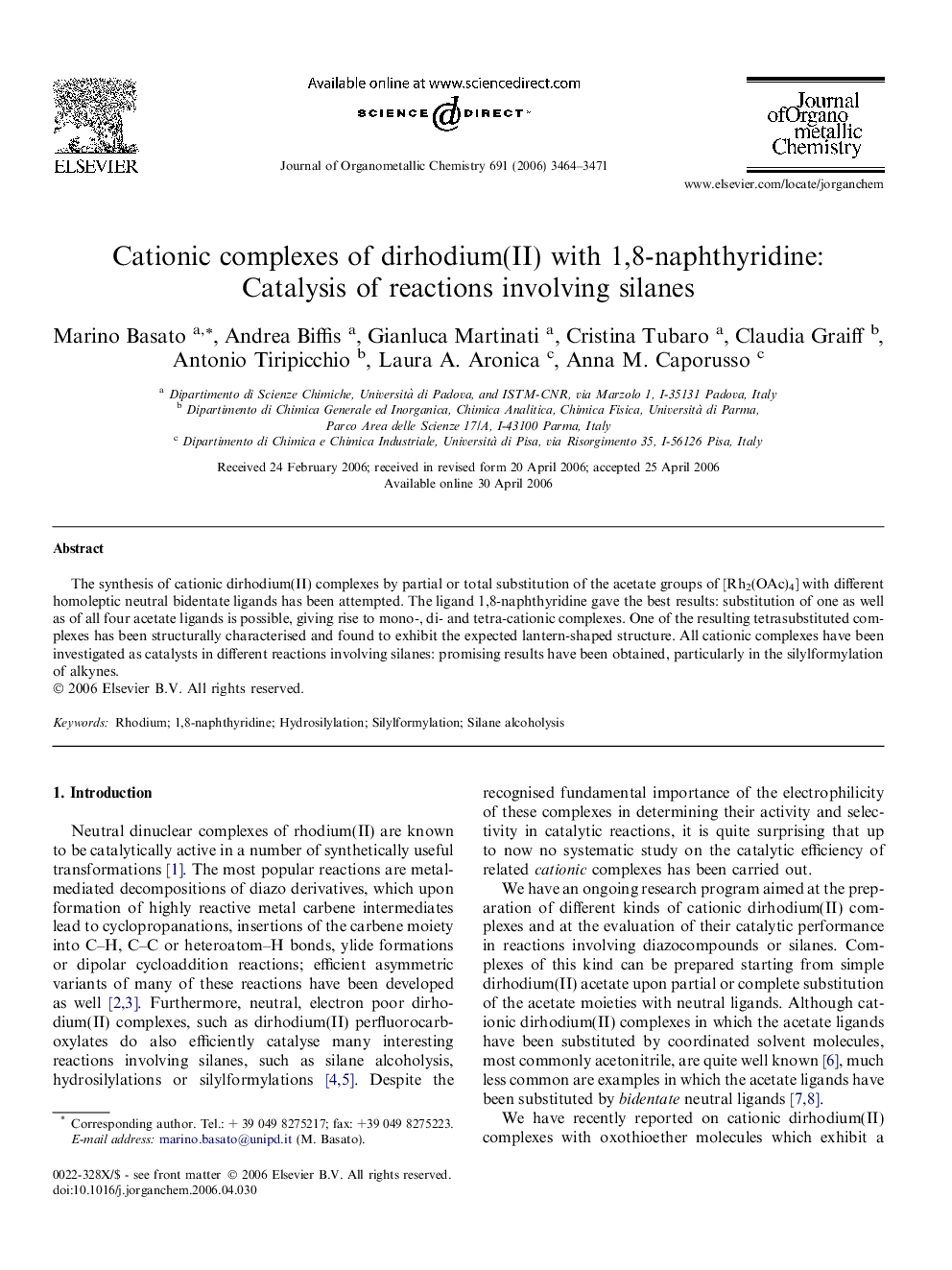| Article ID | Journal | Published Year | Pages | File Type |
|---|---|---|---|---|
| 1325850 | Journal of Organometallic Chemistry | 2006 | 8 Pages |
The synthesis of cationic dirhodium(II) complexes by partial or total substitution of the acetate groups of [Rh2(OAc)4] with different homoleptic neutral bidentate ligands has been attempted. The ligand 1,8-naphthyridine gave the best results: substitution of one as well as of all four acetate ligands is possible, giving rise to mono-, di- and tetra-cationic complexes. One of the resulting tetrasubstituted complexes has been structurally characterised and found to exhibit the expected lantern-shaped structure. All cationic complexes have been investigated as catalysts in different reactions involving silanes: promising results have been obtained, particularly in the silylformylation of alkynes.
Graphical abstractCationic dirhodium(II) complexes with 1,8-naphthyridine exhibit promising catalytic activity in reactions involving silanes, in particular in the silylformylation of alkynes.Figure optionsDownload full-size imageDownload as PowerPoint slide
